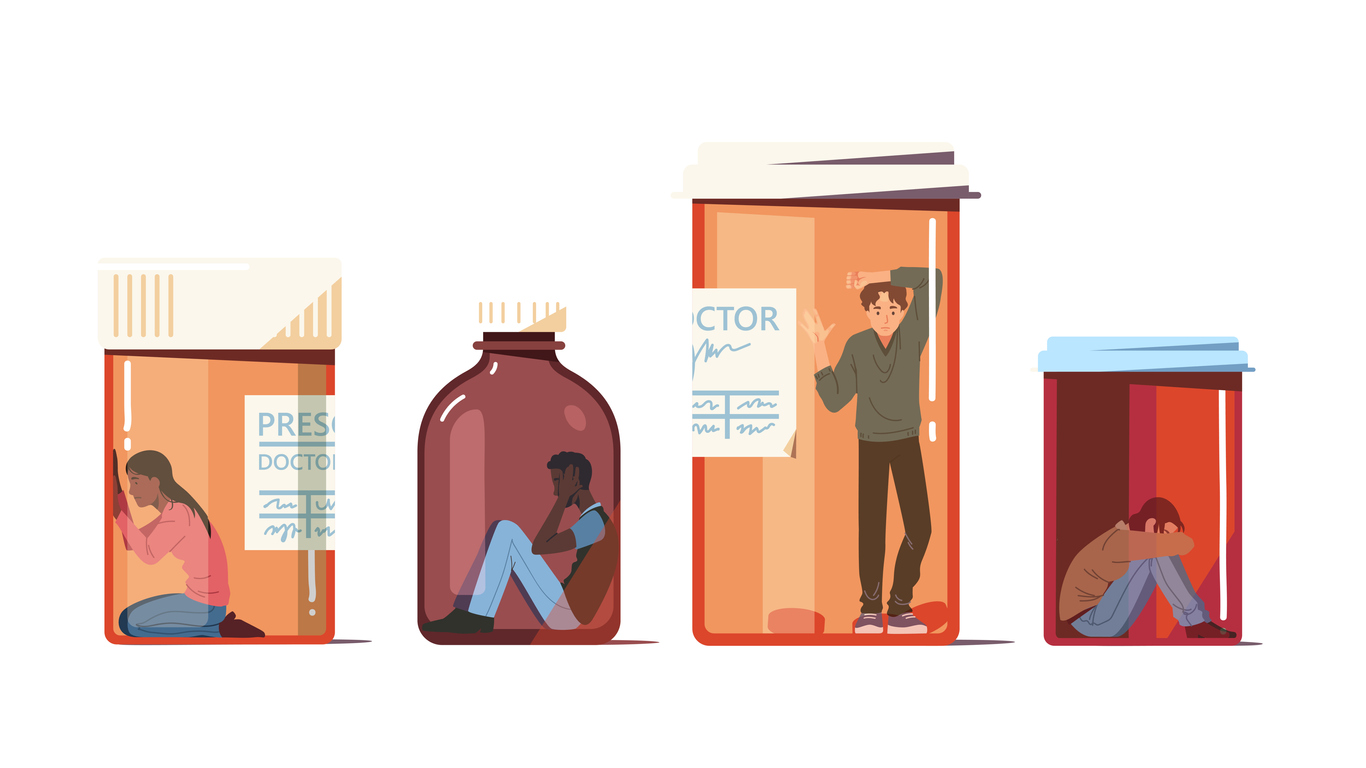When I introduce Steady and say we take a culturally responsive approach to substance use treatment, I am often met with…
“Well, what do you mean by culturally responsive substance use treatment?”

The question usually comes from a place of confusion because, after all, we are all working toward cultural responsiveness…right? What professionals and agencies fail to realize, is substance use treatment is behind the curve in all ways, especially around cultural awareness and responsiveness.
Substance use treatment is still heavily stigmatized and is only recently accessible by providers within patient records. The words we use to describe people with mental health conditions emphasize the person first. The argument made for the need for mental health treatment is that “mental health is a health issue”.
Clinicians across the nation are putting pen to paper and explaining to the world why seeking therapy should be akin to getting a regular physical exam. COVID has also shed significant light on how important mental health and well-being are to one’s life expectancy and quality. Meanwhile, substance use is sort of “thrown in” as an afterthought, if at all. Additionally, professionals in various settings are not aware of their potential role in substance use care.
Culturally responsive substance use looks at the individual and the people around them.
Principals, Program managers, coaches, and spiritual leaders all have a hand in substance use care when approaching from a culturally responsive lens.
Substance use has a long history of being an unfortunate afterthought in healthcare treatment. It was initially labeled a “moral issue”, removing any possibility that substance use could be treatable. Social depictions of substance use ranged from young women making cigarettes “look cool” to the infamous “reefer madness” images to show how “crazy” you would get from cannabis. The ups and downs of substance use are also depicted through prescription medications. The story arc of prescription medications is, “we found a miracle drug! Prescribe it to everyone, for everything, all the time! It solves all the problems!” to “oops! Turns out this is highly addictive. Sorry, this one creates worse symptoms. Take it off the shelves, it’s killing the turtles!!!” Well, I won’t go that far, but you get the point.

Society is so quick to jump on to prescription medications that claim to “cure” mental health conditions, and what we have seen through history is those medications often end up LEADING to addiction! Once this happens, a person becomes labeled as an “addict” or “pill popper” and the misuse of prescription medications grows exponentially.
More attention needs to be paid to the aspect of mental health within the context of substance use and substance use treatment.
Something as foundational in mental health treatment as person-first language is just now being implemented in substance use treatment. National organizations such as the National Institute on Drug Abuse (NIDA) and the Substance Abuse and Mental Health Services Administration (SAMHSA) have only this year, changed their names to National Institute on Drugs and Addiction and the Substance Use and Mental Health Services Administration to reduce stigma.
These are organizations that produce significant portions of national research on substance use, substance use treatment, and substance use trends, yet, in 2022, they are just now making practical changes to their names. This speaks to how behind substance use treatment is in relation to mental health treatment. Additionally, the mere fact that substance use is so separated from mental health, yet simultaneously lumped in with mental health is confusing even for many professionals. It further perpetuates the stigma of substance use treatment and creates inequity in services accessible to people who may have substance use challenges.
As such, adding cultural responsiveness as an aspect of substance use treatment is usually relatively far down the list.
Culturally responsive substance use treatment framework integrates the biological, psychological, and social (Bio-Psycho-Social) life situations, social determinants of health, and a multisystems model to inform substance use treatment.
This may seem complex, and it is, which is why we have such a long history of substance use, misuse, and addiction. All these factors contribute to substance use, so why aren’t all these factors considered or addressed in treatment? Providing culturally responsive substance use treatment means taking all aspects of a person AND society, to inform a treatment approach. It means involvement from a multisystem approach in which neighbors, teachers, principals, bosses, spiritual leaders, social service agencies, and federal government agencies all have a role in working toward culturally responsive substance use care.
The war on drugs, the crack epidemic, and the opioid epidemic are a few examples of how culture has played a role in who uses what drug or substance. This contributes to social aspects of bio-psycho-social life situations. People of color were the target during the war on drugs, and this “war” contributed to the disproportionate number of black and brown individuals who were and are incarcerated. Substance use is seen as a moral failing of an individual or group of individuals. However, systemic racism and institutionalized oppression are significant social factors often not taken into consideration. These social factors are key when thinking about culturally responsive substance use treatment. Whether you work in the capacity of advocating for people with substance use disorders, increasing public awareness, or providing direct care, you must respond to the cultural dynamics at play when engaging minoritized communities in substance use treatment.
Additionally, at the access stage of substance use, geography plays a role in culture. Just as “redlining” amplified the racial wealth gap, treatment facility locations amplify the lack of access to services for marginalized communities. Culturally responsive substance use work looks at the intersectionality of institutions, history, and cultural background at the policy level and targets policy change to reduce substance use and improve substance use treatment. State mental health agencies advocating for more regulation of sober living environments and advocating for more funding to develop healthy, safe, and affordable sober living environments is what culturally responsive substance use treatment can look like at the policy level.

Psychologically, being a victim of hate crimes and experiencing racial trauma are specific factors that are far too often not considered or addressed when people think of substance use. Culturally Responsive substance use treatment addresses these psychological factors. Targeting psychological factors from a culturally responsive approach looks like focusing outward. This approach highlights the Justice in BJED&I to help reduce substance use engagement. Minoritized populations have been treated unjustly, and this has been front and center throughout the COVID pandemic. Advocacy takes a front seat in culturally responsive substance use treatment in this category.
At the direct care level, culturally responsive substance use means expanding one’s understanding of substance use. Providers tend to shy away from asking about substance use directly for a series of reasons, but the truth of the matter is, all the intake questions can sometimes paint a clear picture of why someone would be engaging in substance use. This is especially true for minoritized populations since the instances of adverse childhood experiences are disproportionate.
Culturally responsive substance use treatment means expanding the focus from eliminating the substance use to raising awareness of the significant life experiences, healing the trauma, and providing adaptive coping strategies that are in alignment with one’s culture and values. It means providing alternatives to medication or other substances and helping someone understand what can facilitate intrinsic joy and appreciation for life.
We are all working toward more culturally responsive care and a more equitable, diverse, and inclusive world. Let’s start defining what that means so we can put words into action. When I introduce Steady and say we take a culturally responsive approach to substance use treatment, I mean we put words into actions.




